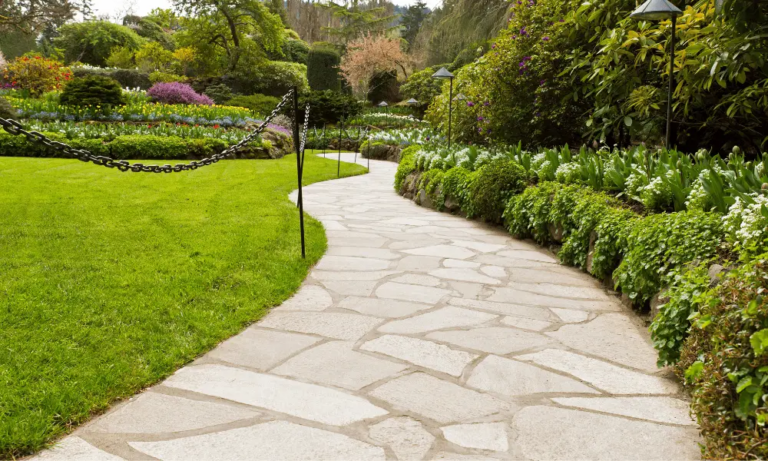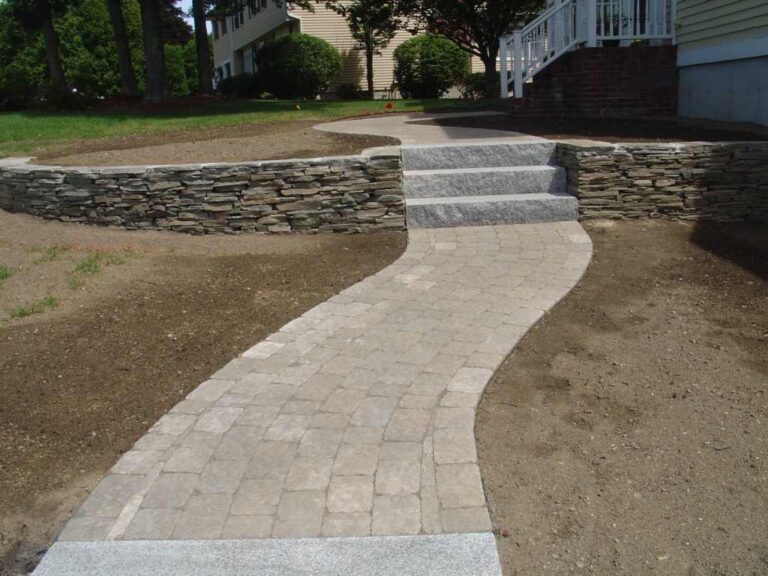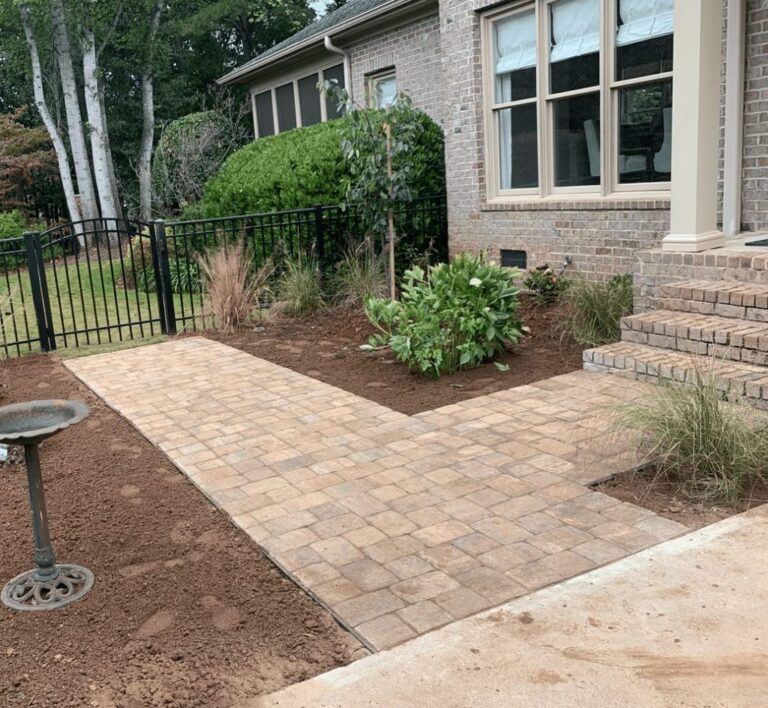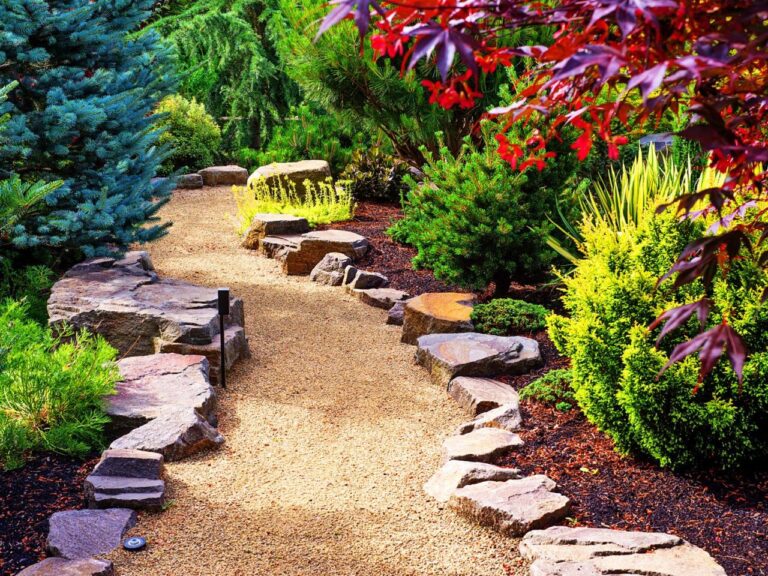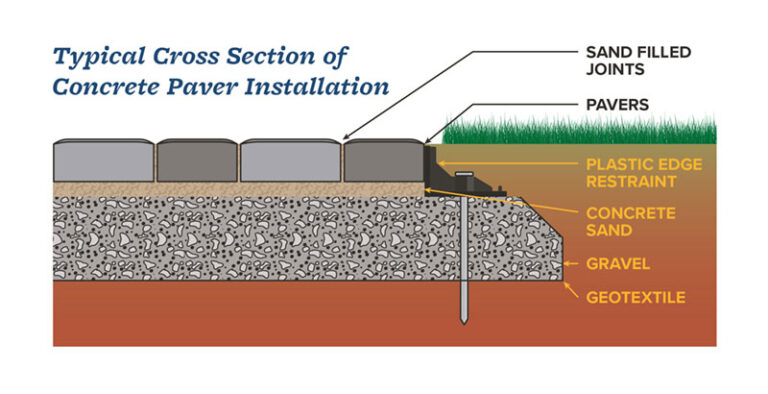Walkways And Driveways
Walkways and driveways are more than just pathways; they are integral components of any landscape, shaping both functionality and aesthetic appeal. From the materials chosen to the design considerations implemented, these elements significantly impact the overall look and usability of a property. This guide delves into the various aspects of walkway and driveway construction, maintenance, and design, offering a comprehensive overview for homeowners and professionals alike. We will explore diverse materials, construction techniques, and crucial design elements to ensure both practicality and visual harmony.
Understanding the interplay between durability, cost-effectiveness, and maintenance is crucial when selecting materials. Furthermore, incorporating accessibility features and safety considerations is paramount to creating inclusive and safe outdoor spaces. This guide aims to provide the knowledge and insights necessary to make informed decisions, leading to the creation of functional, beautiful, and long-lasting walkways and driveways.
Materials for Walkways and Driveways
Choosing the right materials for walkways and driveways is crucial for both aesthetic appeal and longevity. The selection depends on factors such as budget, desired aesthetic, local climate, and expected traffic volume. This section will compare common materials, explore innovative options, and discuss the merits of permeable paving.
Comparison of Common Materials
The table below compares common walkway and driveway materials based on durability, cost, and maintenance requirements.
| Material | Durability | Cost | Maintenance |
|---|---|---|---|
| Concrete | High (with proper reinforcement) | Medium | Medium (crack repair, sealing) |
| Asphalt | Medium | Low to Medium | Medium (crack filling, sealing) |
| Brick | High | Medium to High | Low to Medium (weed removal, occasional replacement) |
| Gravel | Low | Low | High (regular replenishment, weed control) |
| Pavers (Stone, Brick, Concrete) | High | Medium to High | Low to Medium (weed removal, occasional replacement) |
Innovative and Sustainable Materials
Beyond traditional materials, several innovative and sustainable options are gaining popularity. Recycled plastic lumber offers durability and environmental friendliness, while permeable pavers contribute to improved water management. Porous concrete allows water to seep through, reducing runoff and mitigating flooding. These options often come with a higher initial cost but offer long-term benefits in terms of sustainability and reduced maintenance.
Permeable Paving Materials: Pros and Cons
Permeable paving materials, such as porous concrete and gravel, allow water to seep through the surface, reducing runoff and replenishing groundwater. This reduces the burden on storm drains and minimizes flooding. However, they may require more frequent cleaning to prevent clogging and might not be suitable for areas with heavy traffic or freezing temperatures.
- Pros: Improved water management, reduced runoff, environmental benefits, and potential cost savings on drainage systems.
- Cons: Potential for clogging, may require more frequent cleaning, might not be suitable for all climates or traffic levels.
Design Considerations for Walkways and Driveways
Effective design is key to creating functional and aesthetically pleasing walkways and driveways. This section explores design considerations for both small urban gardens and large suburban properties, emphasizing the importance of drainage and slope.
Walkway Design for a Small Urban Garden
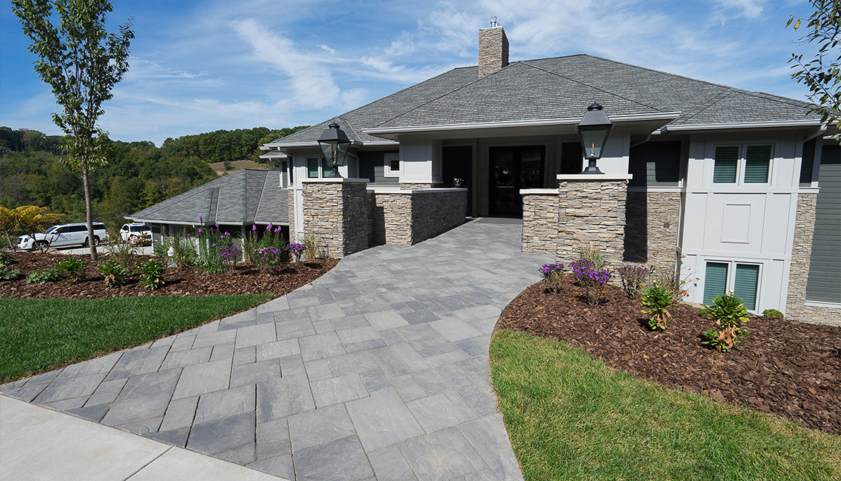
Source: lampus.com
For a small urban garden, a narrow, winding walkway using reclaimed brick pavers would maximize space and add character. The path could incorporate gentle curves and strategically placed planting beds, creating a visually appealing and functional space. The use of darker-colored pavers would provide contrast against lighter-colored planting beds.
Driveway Design for a Large Suburban Home
Designing a driveway for a large suburban home requires careful consideration of functionality and curb appeal. The following elements are crucial:
- Adequate width for two vehicles to pass comfortably.
- Sufficient length to accommodate turning and parking.
- Appropriate material selection considering durability, cost, and maintenance.
- Incorporation of landscaping features to enhance curb appeal.
- Proper drainage to prevent water accumulation.
- Consideration of lighting for safety and aesthetics.
Drainage and Slope Considerations
Proper drainage and slope are critical for preventing water damage and ensuring the longevity of walkways and driveways. Poor drainage can lead to erosion, cracking, and the formation of potholes. Water accumulation can also create slippery surfaces, posing a safety hazard. A slight slope away from buildings and towards designated drainage points is essential to prevent water from pooling and causing damage. For example, a driveway without proper grading might lead to water pooling near the house foundation, potentially causing basement flooding or structural damage over time.
Construction and Installation Methods: Walkways And Driveways
This section details the construction and installation methods for various walkway and driveway materials, highlighting the advantages and disadvantages of each approach.
Concrete and Asphalt Driveway Installation
| Method | Material | Advantages | Disadvantages |
|---|---|---|---|
| Concrete Pouring | Concrete | Durable, relatively inexpensive, customizable | Can crack, requires proper curing, labor-intensive |
| Asphalt Paving | Asphalt | Flexible, smooth surface, relatively quick installation | Less durable than concrete, requires regular sealing, susceptible to cracking and potholes |
Brick Walkway Installation
Installing a brick walkway involves several steps: First, prepare the base by excavating to the desired depth and compacting the soil. Next, lay a layer of gravel or sand for drainage and leveling. Then, lay the bricks in a chosen pattern, ensuring even spacing and levelness. Finally, grout the joints between the bricks to stabilize the walkway and prevent weed growth. Consider using polymeric sand for enhanced weed control.
Gravel Pathway Construction, Walkways and driveways
Creating a gravel pathway begins with preparing a stable base. This typically involves excavating, compacting the sub-base, and adding a layer of landscape fabric to prevent weed growth. The gravel is then spread evenly to the desired depth. Edge retention is crucial to prevent gravel from spreading, often achieved using timber, metal edging, or retaining walls. Regularly replenishing the gravel is necessary to maintain the pathway’s integrity.
Maintenance and Repair of Walkways and Driveways
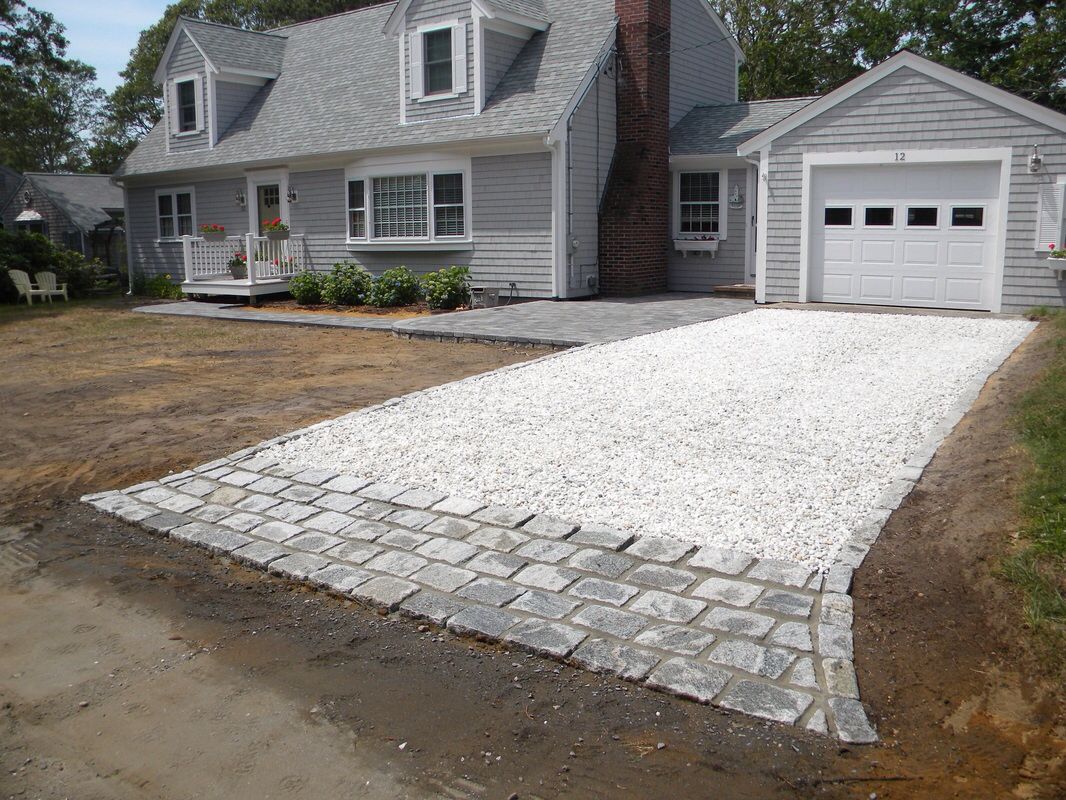
Source: pinimg.com
Regular maintenance is essential for extending the lifespan of walkways and driveways. This section guides repairing cracks, implementing preventative measures, and addressing common problems.
Repairing Cracks in a Concrete Driveway
Repairing cracks in a concrete driveway involves cleaning the crack, widening it slightly (if necessary), and filling it with a suitable crack filler. Ensure the filler is compatible with the concrete and properly cured before applying a sealant to protect the repair. For larger cracks, consult a professional concrete contractor.
Preventative Maintenance Tips
Preventative maintenance varies depending on the material. For concrete, sealing every few years helps prevent water damage. For asphalt, regular sealing is crucial. For brick and pavers, weed removal and occasional joint cleaning are necessary. Regular sweeping and cleaning remove debris that can accelerate deterioration.
Common Problems and Solutions
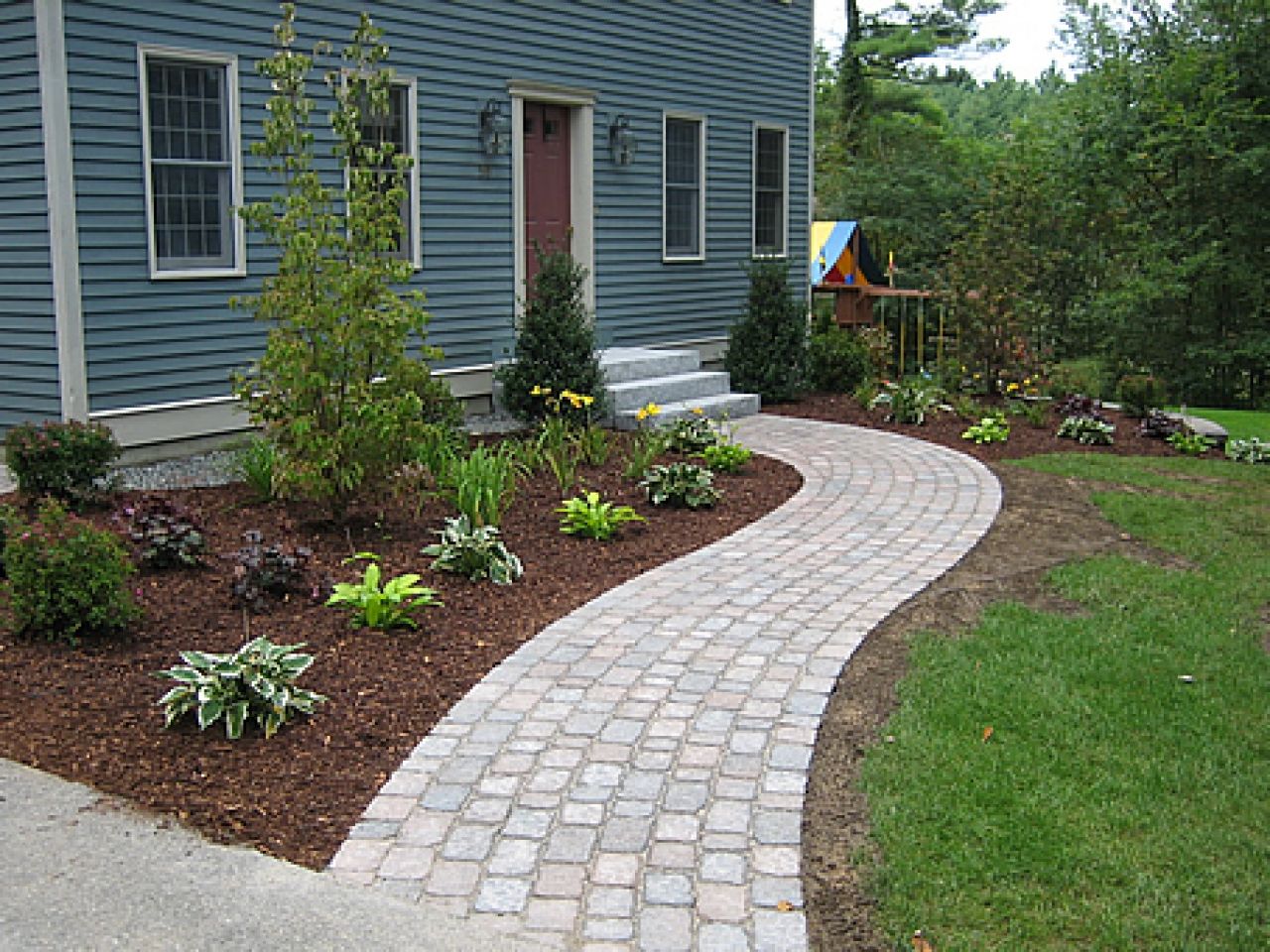
Source: pinimg.com
Poorly maintained walkways and driveways can lead to various problems, including cracking, potholes, weed growth, and erosion. Addressing these issues promptly prevents further damage and enhances safety. For example, addressing cracks early prevents them from worsening, potentially leading to more extensive and costly repairs. Regular cleaning and weed control help maintain the aesthetic appeal and prevent structural damage.
Accessibility and Safety Features
Designing accessible and safe walkways and driveways is paramount. This section discusses accessibility features and safety considerations, highlighting the role of lighting.
Accessible Walkway Design
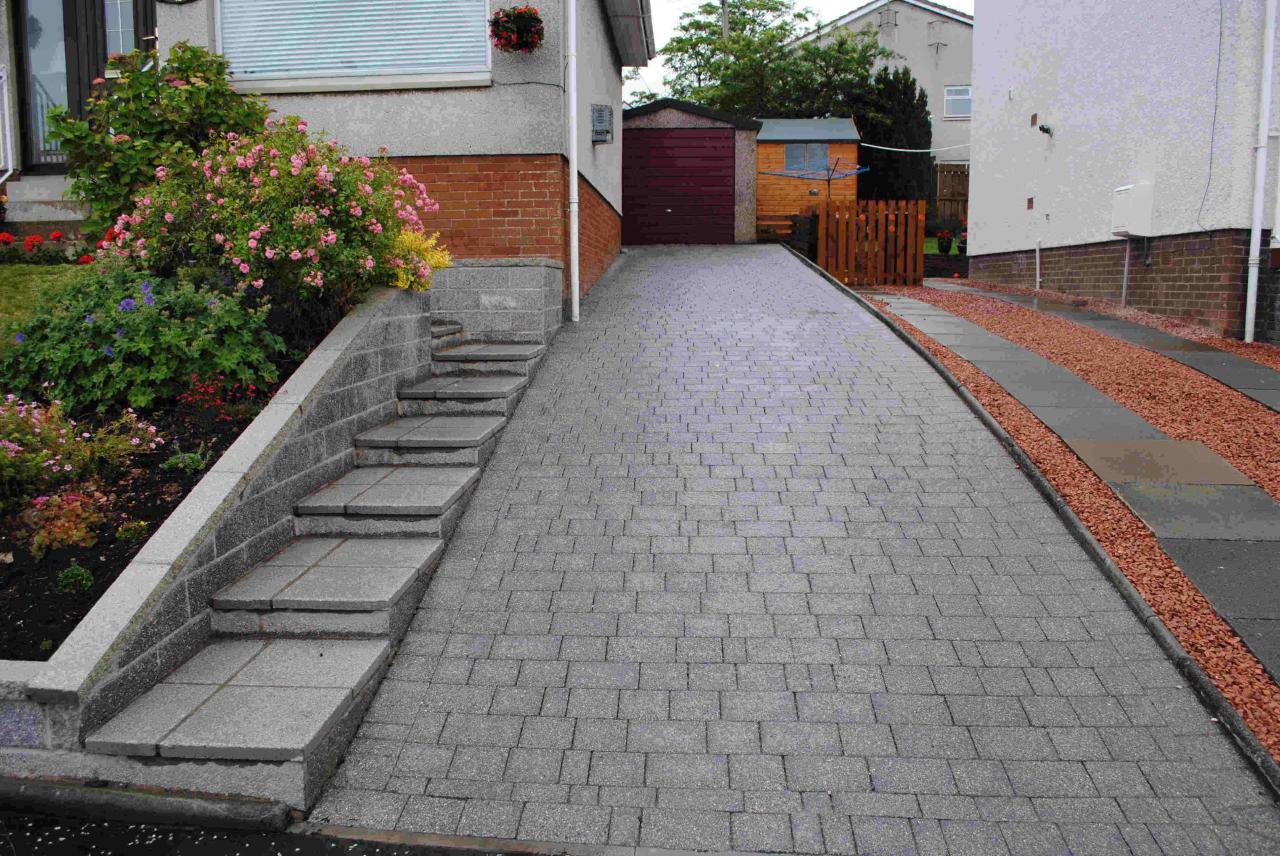
Source: jade-remodeling.com
An accessible walkway for individuals with mobility limitations should incorporate features such as a smooth, level surface with minimal elevation changes. A wider pathway is essential, allowing for wheelchair or mobility scooter access. Ramped access points should be provided at elevation changes, complying with accessibility guidelines. Clearly defined edges prevent accidental falls. Consider using tactile paving to guide visually impaired individuals.
Safety Hazards and Mitigation
Potential safety hazards include uneven surfaces, inadequate lighting, slippery materials, and obstructed pathways. Addressing these hazards is crucial for preventing accidents. For example, using non-slip materials, providing adequate lighting, and ensuring clear pathways minimize risks. Regular maintenance and prompt repair of damaged areas also improve safety.
Lighting for Safety and Aesthetics
Proper lighting enhances safety by improving visibility, particularly at night. It also enhances the aesthetic appeal of walkways and driveways. Consider using motion-sensor lights for energy efficiency and security. Soft, ambient lighting can create a welcoming atmosphere. Strategic placement of lights illuminates potential hazards and highlights architectural features.
Question Bank
What is the lifespan of a typical concrete driveway?
With proper installation and maintenance, a concrete driveway can last 25-30 years or more.
How often should I seal my asphalt driveway?
Sealing your asphalt driveway every 2-3 years helps protect it from damage and extend its lifespan.
What are some eco-friendly options for walkways?
Consider permeable paving materials like gravel, porous concrete, or recycled plastic lumber for eco-friendly walkways.
Can I install a driveway myself?
While possible for smaller projects, installing a driveway is often a complex undertaking best left to professionals for larger areas.
How do I prevent weeds from growing in my brick walkway?
Use weed barrier fabric under the bricks and fill joints thoroughly with grout to prevent weed growth.
